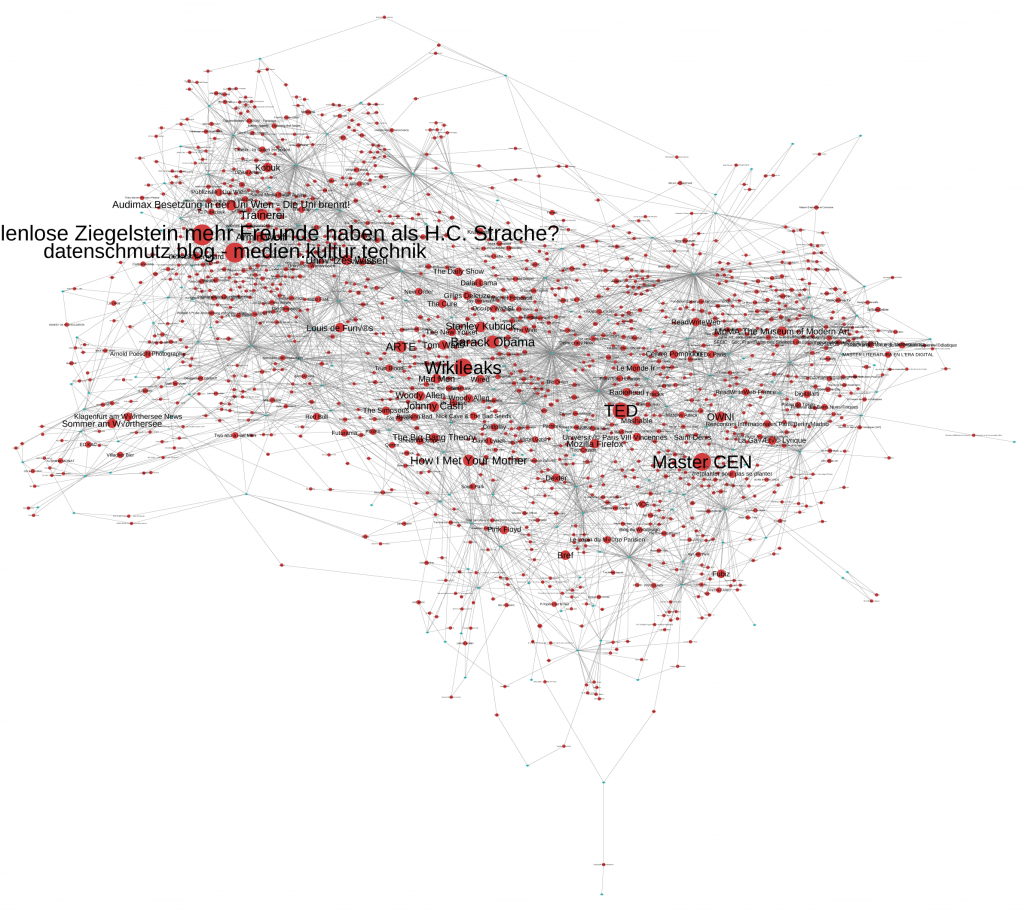I am sick this weekend and that’s a justification to stay in bed and play around with the computer a bit. Over these last weeks, I was thinking that it may be interesting to get back to the aging netvizz application and make some direly needed revisions and updates, especially concerning some of the quantitative measures concerning individual users’ activity. Maintenance work is not fun, however, so I decided to add a new feature instead: the bipartite like network.
The idea is pretty simple: instead of graphing friend relationships between users, the new output basically just throws users and likes (liked pages that is – external objects are not available through the API) into the same graph. If a user likes something a link is created. That’s also how Facebook’s opengraph architecture works on the inside. The result – done with gephi – is pretty interesting though (click for bigger image):
The small turquoise dots are users and the bigger red ones liked objects. I eliminated users that did not like anything (or have strong privacy settings), as well as all things liked by a single person only. The data field “likesize” in the output file indicates how often an object has been liked and makes it possible to size likes separately from users (the “type” field distinguishes the two). It is not surprising that, at least in my case, the network of friendship connections and the like network are quite similar. People from Austria do not like the same things as my French friends – although there is a cluster of international stuff in the middle: television shows, music, wikileaks, and so on; these things cannot be clearly attributed to a user group.
One can actually use the same output file for something quite different. The next image shows the same graph but with nodes sized for number of connections (degree). This basically shows the biggest “likers” (anonymized for the purpose of this post) in the network and still keeps the grouped by similar like patterns.
 The new feature is already live and can be tried out. If you want to do more than make pretty pictures, I highly recommend checking out the work by my colleagues Carolin Gerlitz and Anne Helmond on what they call the “like economy”.
The new feature is already live and can be tried out. If you want to do more than make pretty pictures, I highly recommend checking out the work by my colleagues Carolin Gerlitz and Anne Helmond on what they call the “like economy”.
And now back to bed.
14 Comments
Leave a Reply
Tech support questions will not be answered. Please refer to the FAQ of the tool.

Pingback: Visualizing bipartite Facebook Like networks « Anne Helmond
Pingback: Summer news | Gephi
Pingback: Problematic Facebook API permissions: the case of read_stream
Pingback: Summer news | Gephi blog